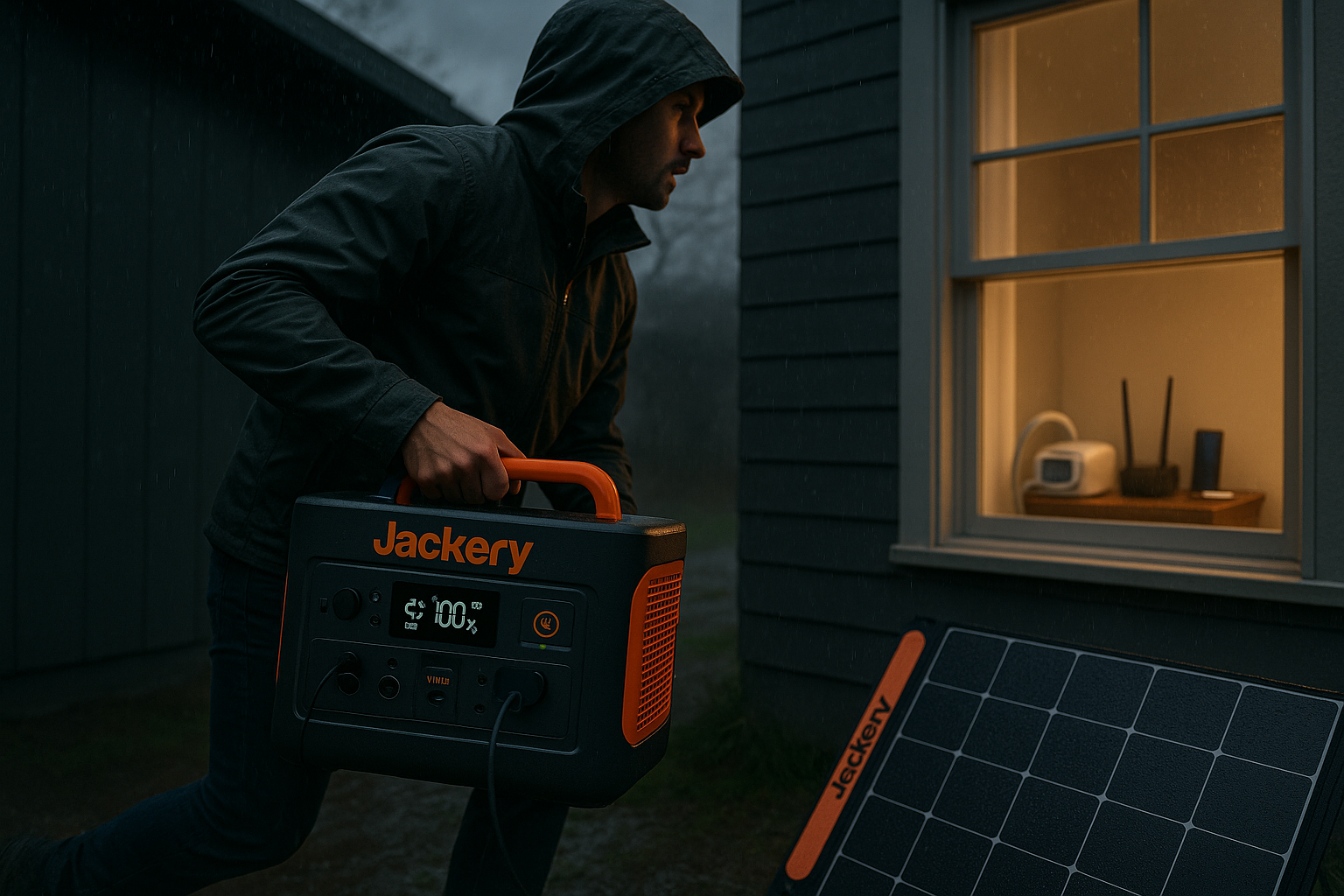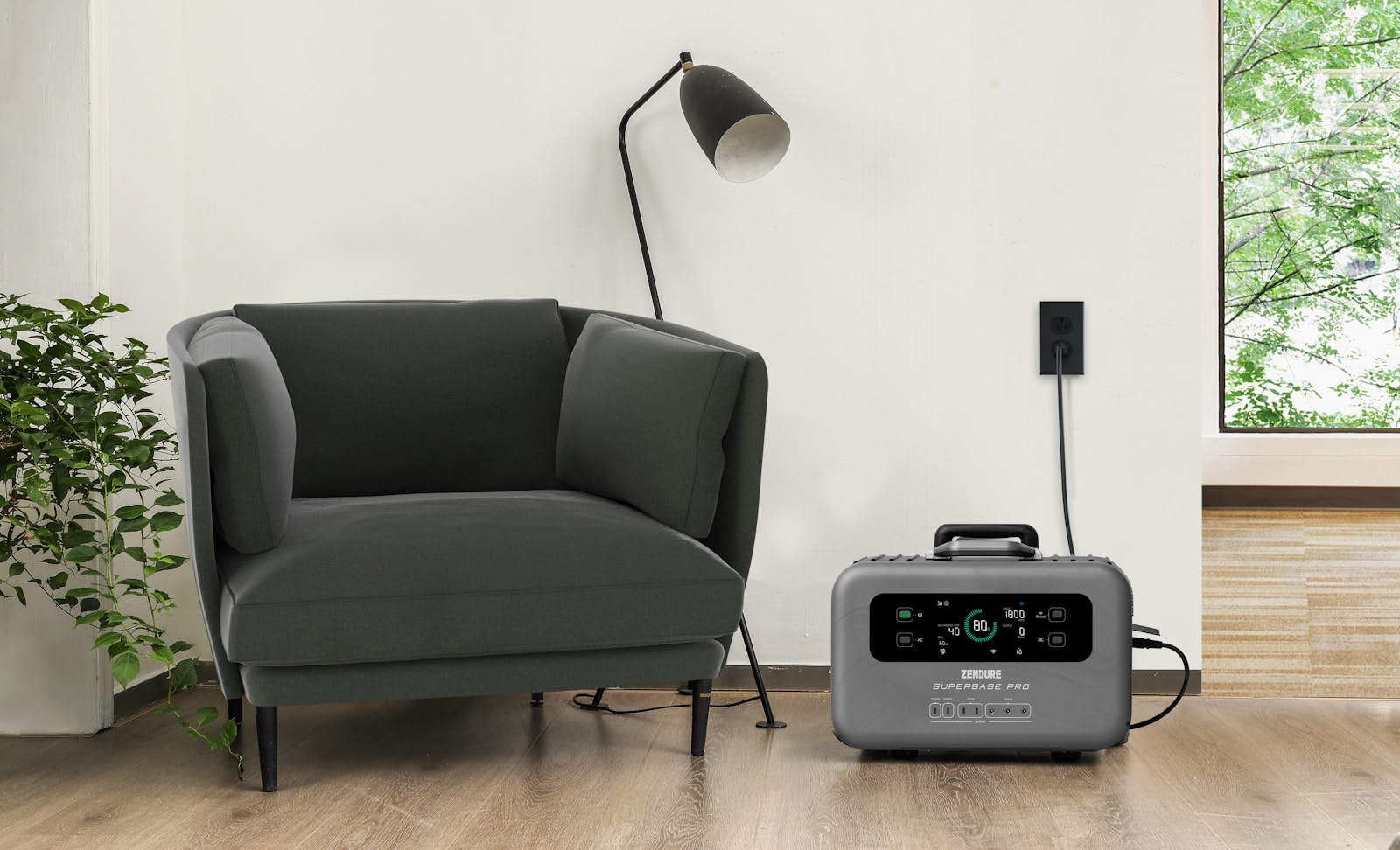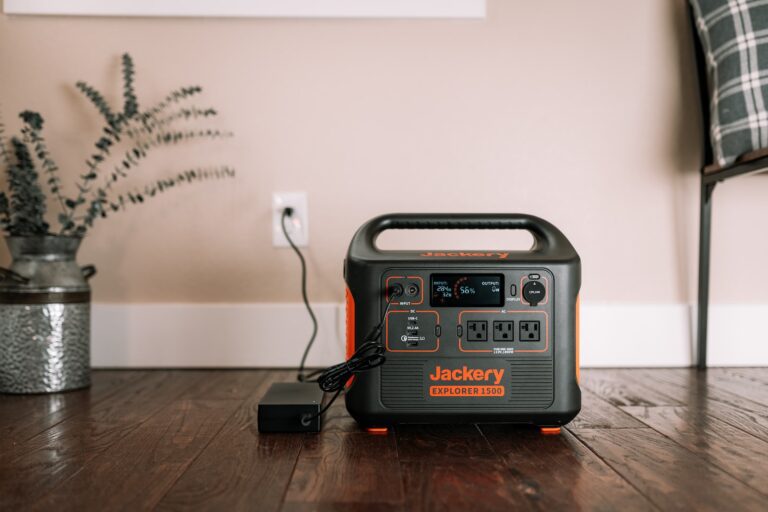Using Jackery as a UPS: A Comprehensive Guide.
For anyone reliant on electronic devices—whether for remote work, critical home systems, creative pursuits, or emergency preparedness—the threat of a sudden power outage is a constant concern. A reliable backup power solution is essential. This led me to investigate a popular question: Can a Jackery portable power station effectively function as an Uninterrupted Power Supply (UPS)? After thorough testing and research, I’ll share a detailed breakdown of the capabilities, limitations, and practical steps for using Jackery in this role.
Understanding the Core: What is a UPS?
An Uninterruptible Power Supply (UPS) is far more than just a backup battery. It’s a sophisticated system designed with one primary mission: to provide seamless, instantaneous power to connected devices during a grid failure, preventing any interruption in operation. Key characteristics define a true UPS:
- Zero Transfer Time: The most critical feature. A UPS detects a power loss instantly (typically within 2-10 milliseconds) and switches to battery power so quickly that sensitive electronics like computers, network gear, or medical devices don’t shut down or reboot.
- Automatic Voltage Regulation (AVR): Protects against damaging voltage sags (brownouts) and surges by regulating the incoming power before it reaches your devices.
- Surge Protection: Shields connected equipment from damaging power spikes.
- Pure Sine Wave Output: Essential for safely powering sensitive electronics with Active PFC power supplies (most modern computers, servers, medical equipment, audio/video gear). Modified sine wave can cause malfunctions, damage, or inefficiency.
- Automatic Operation: The entire switchover and protection process happens without user intervention.
Jackery Power Stations: Versatile Portable Power
Jackery is a leading brand in the portable power station market. These units are essentially large-capacity lithium-ion (or increasingly, LiFePO4) batteries housed in a rugged case with multiple output ports and built-in inverters. They are designed for:
- Portability: Powering devices off-grid (camping, RVing, tailgating).
- Emergency Backup: Providing essential power during outages.
- Renewable Charging: Recharging via solar panels (a major selling point), AC wall outlets, or car chargers.
Jackery offers models ranging from the compact Explorer 240/300 to the powerful Explorer 2000 Plus/3000 Pro. Key features include AC outlets (pure sine wave on most models), USB-A/C ports, 12V DC carports, and often Bluetooth app monitoring.
Can a Jackery Power Station Function as a UPS? The Detailed Answer
Technically, yes, but with significant caveats and manual configuration. Jackery power stations are not designed or marketed as traditional UPS devices. However, they can be used to provide backup power for critical devices during an outage. The critical difference lies in automation and speed.
- The Transfer Time Challenge (The Biggest Limitation):
- Jackery: Requires manual intervention. When the grid fails, you must physically unplug your device from the wall outlet and plug it into the Jackery’s AC outlet. This process takes seconds (or minutes if you’re not present), causing any running device to shut down.
- True UPS: Provides instantaneous (<10ms) automatic switchover. Your devices never lose power.
- Consequence: Jackery is NOT suitable for devices that cannot tolerate any interruption (e.g., desktop computers without a battery backup, network servers, CPAP machines without internal battery backup, sump pumps mid-cycle). It is suitable for devices where a brief shutdown is acceptable before manually switching to backup power (e.g., restarting a router/modem, powering lights, running a fan, charging phones/laptops after the outage begins).
- Runtime: Capacity vs. Demand
- Runtime is determined by the capacity (Wh) of your specific Jackery model and the wattage (W) of the device(s) you connect.
- Formula (Simplified): Runtime (hours) ≈ (Jackery Capacity (Wh) * 0.85) / Device Wattage (W). The 0.85 accounts for inverter inefficiency.
- Example: A Jackery Explorer 1000 (1002Wh) powering a 60W modem/router combo: Runtime ≈ (1002 * 0.85) / 60 ≈ 14.2 hours.
- High-Draw Devices: Running large appliances like refrigerators (150-800W) or space heaters (1000W+) will drain even large Jackery units (e.g., 2000 Pro – 2160Wh) very quickly, potentially within a couple of hours. Check device labels for actual wattage. Jackery’s website/app provides runtime estimates.
- Surge Protection & AVR:
- Jackery: While robustly built, Jackery stations do not typically offer the same level of integrated surge suppression or Automatic Voltage Regulation (AVR) as a dedicated UPS. They rely on the inverter’s basic protection.
- True UPS: Includes robust multi-stage surge protection and AVR as core functions.
- Recommendation: If using a Jackery as a backup, always plug the Jackery itself into a high-quality surge protector to safeguard both the station and your devices from spikes on the grid side. This does not provide AVR.
- Pure Sine Wave Output (A Positive):
- Most modern Jackery models (especially mid-range and above) feature pure sine wave inverters. This is crucial for safely powering sensitive electronics without risk of damage or instability, matching a key UPS requirement.
- Charging While Discharging (“Pass-Through Charging”):
- Critical Feature for UPS-like Use: Many Jackery models (check specifications!) support charging via AC or solar while simultaneously powering devices from their outputs. This is essential if you want the Jackery to be charged and ready before an outage and to potentially extend runtime during a long outage if you have solar/generator access.
- Limitation: The combined input wattage (charging) plus output wattage (discharging) cannot exceed the unit’s maximum handling capacity. High output loads might slow down charging.
Benefits of Using Jackery as a Backup Power Source (UPS Alternative)
Despite the limitations for true UPS applications, using a Jackery for backup power offers distinct advantages:
- Portability & Multi-Use: Take it camping, to a job site, or use it as home backup. A traditional UPS is fixed in place.
- Solar Rechargeability: Replenish power indefinitely with solar panels during extended outages, a feature most UPS units lack.
- High Capacity Options: Large Jackery models offer significantly more capacity than typical desktop UPS units, allowing longer runtimes for essential devices.
- Versatile Outputs: Power a wide range of devices (AC, USB, DC) beyond just computers.
- Silent Operation: No fans or noise compared to some UPS units or generators.
- Eco-Friendly: Utilizes renewable solar energy.
Step-by-Step Guide: Setting Up Jackery for Backup Power
- Choose the Right Model: Select a Jackery with sufficient capacity for your target devices and runtime needs. Ensure it supports pass-through charging (most newer models do). Consider LiFePO4 models (e.g., Explorer 1000 Plus, 2000 Plus) for longer lifespan if this is a primary backup use case.
- Keep it Charged: This is paramount. Always keep your Jackery charged to 80-100%, especially during storm seasons or if relying on it for critical devices. Use the AC adapter plugged into a wall outlet (protected by a surge protector).
- Connect Devices Strategically: Plug devices you wish to back up directly into the Jackery’s outputs (AC, USB, DC). Do not plug the Jackery’s AC output into a wall outlet or power strip.
- During an Outage:
- Your devices plugged into the wall will lose power immediately.
- Manually unplug those critical devices from the wall outlets/power strips.
- Immediately plug them into the pre-charged Jackery.
- Power on the devices.
- Extending Runtime: If the outage is prolonged and you have access:
- Connect solar panels to the Jackery’s Solar Input.
- Connect to a running car (using the 12V car charger adapter).
- Connect to a gas generator (via AC input).
Jackery vs. Traditional UPS: Key Differences Summary
| Feature | Traditional UPS | Jackery Power Station (as Backup) |
|---|---|---|
| Primary Purpose | Zero-interruption backup | Portable power / Manual backup |
| Transfer Time | Instantaneous (<10ms) | Manual (Seconds/Minutes) |
| Operation | Fully Automatic | Manual Switchover Required |
| Surge Protection/AVR | Integrated, Robust | Basic (Use External Surge Protector) |
| Output Waveform | Pure Sine Wave (Standard) | Pure Sine Wave (Most Models) |
| Pass-Through Charging | Not Standard | Supported (Most Models) |
| Recharge Options | AC Only | AC / Solar / Car |
| Portability | Low (Fixed Installation) | High |
| Max Capacity | Typically Low-Medium (VA) | Very High (Up to 3000Wh+) |
| Best For | Critical no-break devices | Non-critical devices, Portable needs, Extended backup with solar |
FAQs: Using Jackery as Backup Power/UPS
- Q: Can I use Jackery for a device that absolutely cannot lose power?
- A: Generally, NO. Unless the device itself has an internal battery backup (like a laptop) that bridges the gap during the manual switch, the interruption caused by unplugging from the wall and plugging into the Jackery will cause it to shut down. Use a true UPS for life-sustaining medical equipment, servers, or critical desktops.
- Q: How long will my Jackery power my [specific device]?
- A: Calculate it: Runtime ≈ (Jackery Capacity in Wh * 0.85) / Device Wattage (W). Find your device’s wattage on its label or manual. Use the Jackery app or website for estimates. *Example: 300W fridge on a 1000Wh Jackery ≈ (1000 * 0.85) / 300 ≈ 2.8 hours.*
- Q: Can I charge my Jackery (via AC/solar) while it’s powering devices?
- A: Yes, if your model supports Pass-Through Charging. Check the specifications. This is crucial for keeping it topped up before an outage and extending runtime during one (with solar/generator). Be mindful of total input+output limits.
- Q: How do I connect my devices?
- A: Plug devices directly into the Jackery’s AC outlets, USB ports, or 12V DC ports using the appropriate cables. Never plug the Jackery’s AC output into a wall socket.
- Q: Can I back up my entire house?
- A: No. Jackery stations are for powering individual or small groups of essential devices (fridge, comms, lights, medical with caution). Whole-house backup requires a much larger system (generator + transfer switch or dedicated home battery).
- Q: Is pure sine wave important?
- A: YES. Ensure your Jackery model has a pure sine wave inverter, especially for sensitive electronics (computers, medical equipment, modern appliances). Avoid older or budget models with modified sine wave for this use.
- Q: How do I maintain it?
- A:
- Keep Charged: Maintain 80-100% charge, especially before potential outages. Recharge promptly after use.
- Regular Use/Check: Use and recharge the unit every 3-6 months. Check battery level via the display/app periodically.
- Storage: Store in a cool, dry place (ideally 50-77°F / 10-25°C). For long storage (>3 months), charge to 50-60%.
- Firmware: Update firmware via the app if available.
- Environment: Operate and charge in a well-ventilated area. Avoid extreme heat (>104°F / 40°C) or cold (<14°F / -10°C).
- A:
- Q: Is it safe?
- A: Yes, when used properly. Follow the user manual. Use in well-ventilated areas. Don’t overload outlets. Use an external surge protector on the AC input. Don’t expose to water, fire, or extreme physical shock. Don’t modify the unit. LiFePO4 models offer enhanced thermal stability.
- Q: What if it doesn’t work during an outage?
- A: Troubleshoot:
- Check Jackery battery level and power button.
- Ensure the device is plugged firmly into the Jackery, not the wall.
- Verify the Jackery outlet/USB port is turned on (some have switches).
- Try a different cable or port on the Jackery.
- Check if the device itself is faulty (try another power source).
- Ensure Pass-Through Charging is supported and functioning correctly pre-outage.
- Contact Jackery Support if issues persist.
- A: Troubleshoot:
Critical Considerations & Limitations
- Not for Critical No-Break Needs: Reiterating – the manual switchover makes it unsuitable for devices that crash or cause harm if power is interrupted.
- Battery Degradation: Lithium batteries degrade over time and with cycles. Capacity will diminish after 2-5+ years (LiFePO4 lasts longer). Factor this into runtime expectations.
- Temperature Sensitivity: Extreme cold drastically reduces available capacity and can prevent discharging. Extreme heat accelerates degradation and poses safety risks.
- Ventilation: Ensure adequate airflow around the unit during charging/discharging, especially under heavy loads.
- Daisy-Chaining: Do NOT plug a UPS into a Jackery or vice-versa. This can cause damage due to incompatible waveforms and transfer times.
A Powerful Backup Tool, But Not a True UPS
Jackery power stations are incredibly versatile and valuable tools for providing backup power during outages. Their portability, solar charging capability, and high capacity make them excellent for keeping essential devices running when the grid goes down, especially in scenarios where a brief interruption is acceptable or devices have their own internal batteries.
However, they are fundamentally not Uninterruptible Power Supplies (UPS) due to the critical lack of instantaneous automatic transfer. The requirement for manual intervention means connected devices will experience a power interruption during a grid failure. Use them confidently for non-critical backup needs, lighting, communication devices (after switchover), and appliances where a restart is okay. For truly critical, no-break applications, invest in a dedicated UPS system. By understanding these distinctions and following the setup and maintenance guidelines, you can effectively leverage a Jackery power station as a crucial part of your emergency power strategy.





